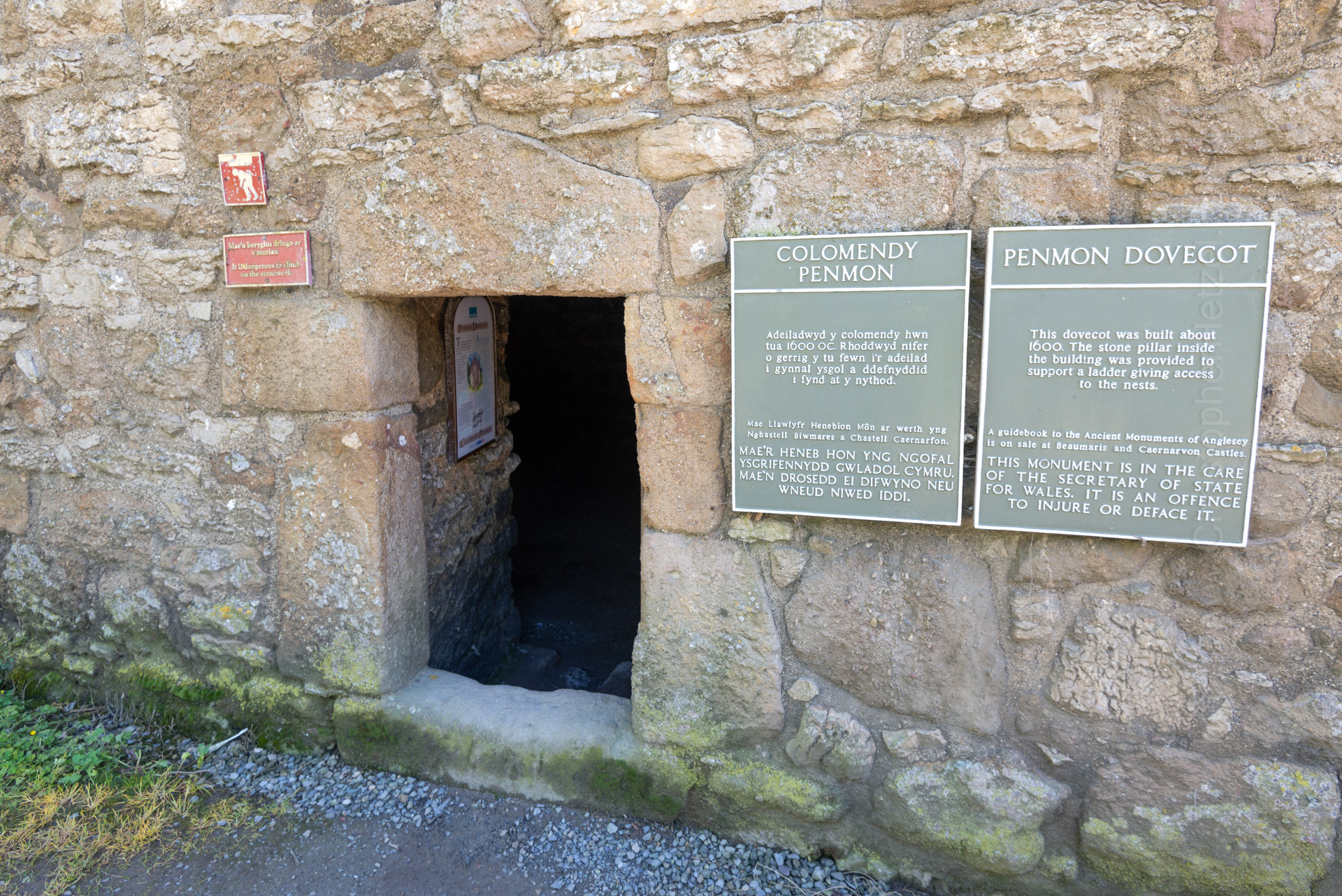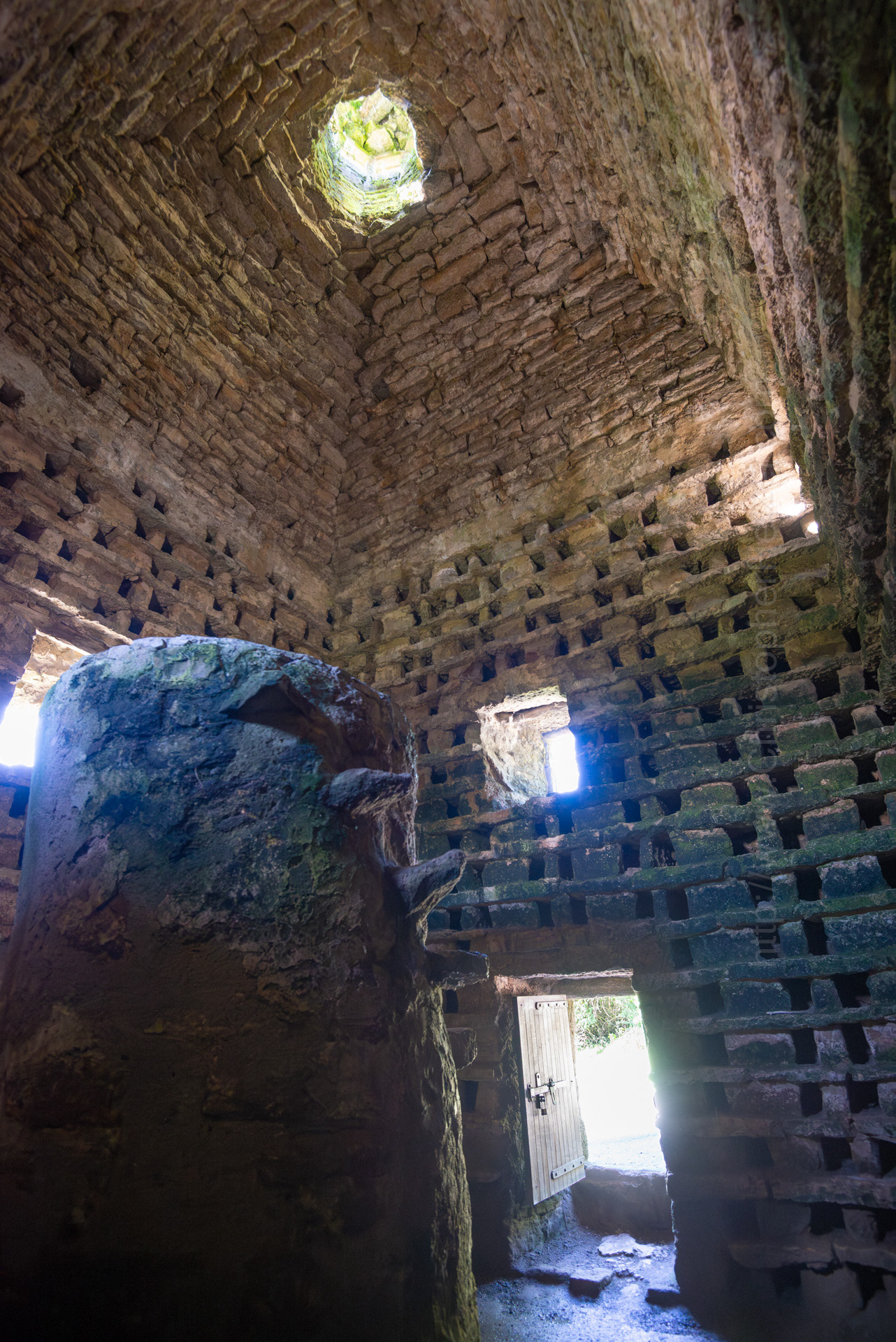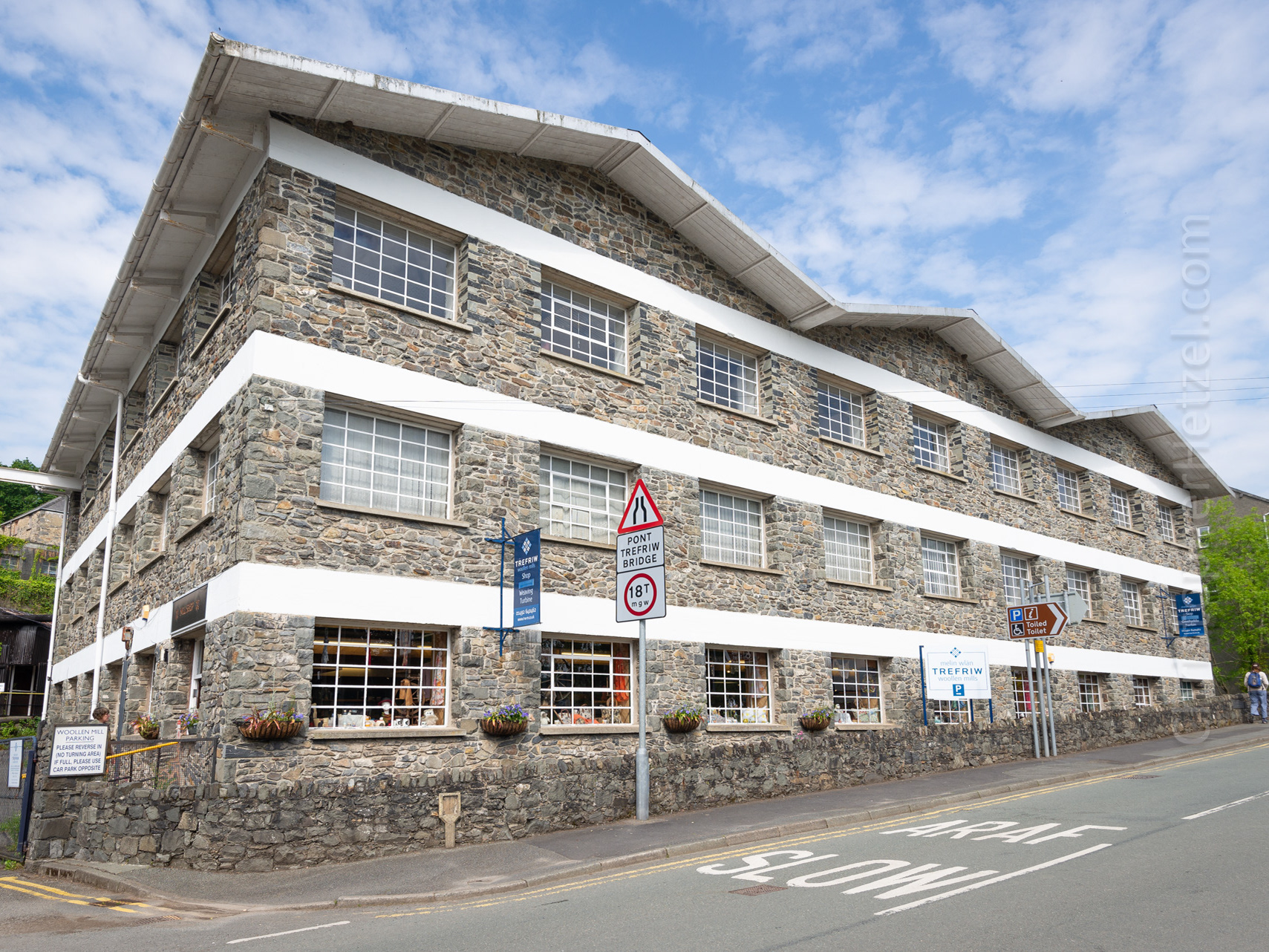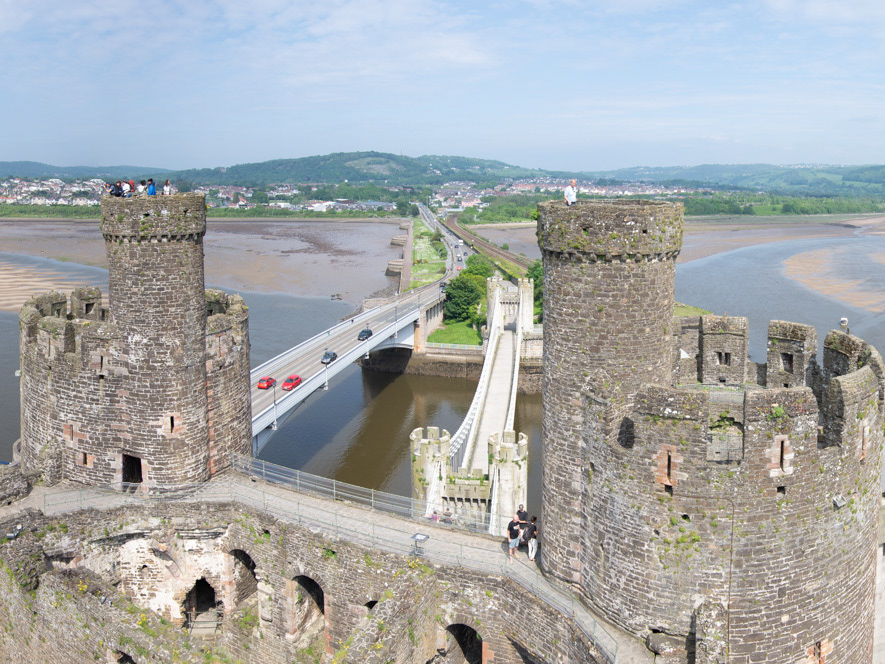Architecturally, one of the more impressive (and unique!) structures visited in Wales was the Penmon Dovecot. Located on the grounds of the former Penmon Priory at the eastern tip of Anglesey Island, the structure was built circa AD 1538 by the Bulkeley family of nearby Beaumaris. The family had acquired the former 6th-12th century monastery after its dissolution in the 16th century and converted the grounds to a country residence and deer park.
During the medieval period, dovecots were conspicuous symbols of wealth and status and young pigeons a prized source of tender meat.The dovecot has about 930 nesting holes; pigeons could fly in and out of the structure through the cupola in the roof. The central pillar is a unique feature to the structure, and its exact function is uncertain. Each nesting hole provided enough space for a pair of pigeons. The birds could breed up to eight times a year, and the young 'squabs' were culled for eating at about four weeks old.










Return to Wales


